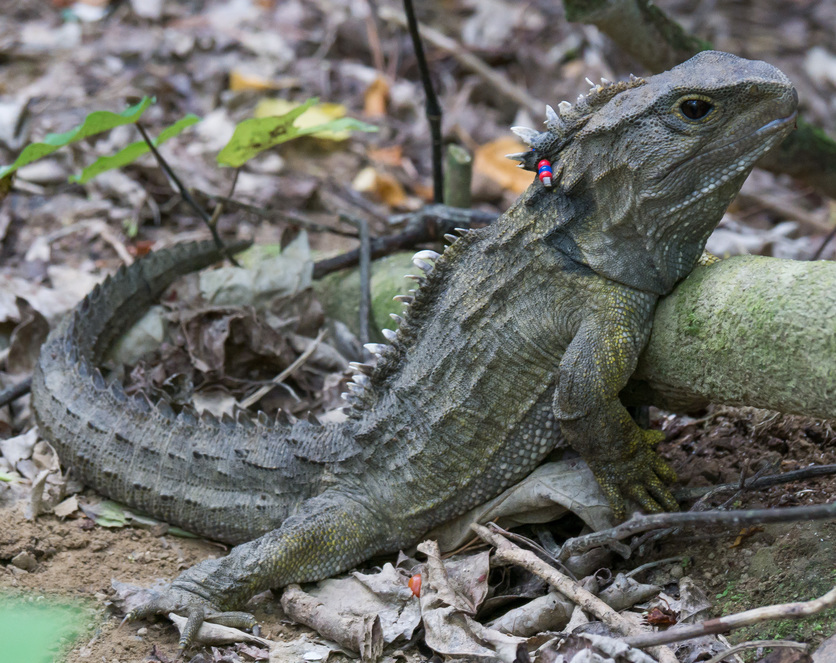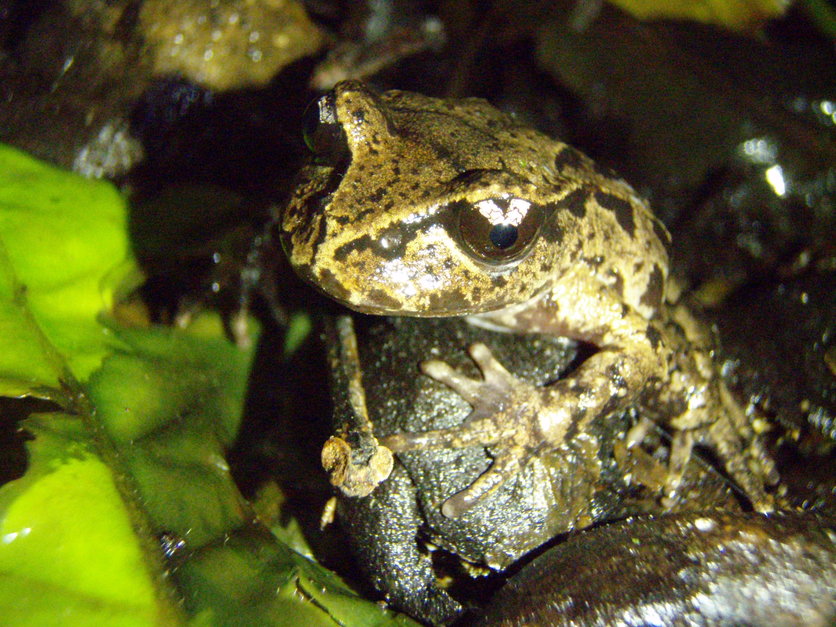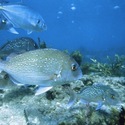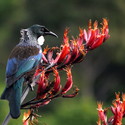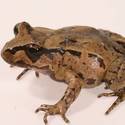This timeline provides look at some of the historical aspects of saving our reptiles and amphibians and other species1, the impacts on them by humans, and our conversation efforts in New Zealand to try to prevent more species extinctions.
1200–1300 – Kiore arrive in NZ
Kiore (Pacific rats) arrive in New Zealand with the early Polynesian settlers. Kiore2 eat seeds, fruits, lizards, insects and the eggs and chicks of native3 birds. They are blamed for a number of early extinctions of native species.
1769 – Norway rats arrive in NZ
Norway rats arrive in New Zealand on James Cook’s ship Endeavour. They are excellent swimmers and quickly colonise the mainland as well as many offshore islands. Their varied diet includes reptiles, and they are blamed for a number of extinctions of native species.
1860s–1870s – Ship rats spread
Ship rats arrive on sealing, whaling and trading vessels and quickly spread throughout New Zealand. They are able to climb trees and have become the most widespread of the 3 introduced rat species.
1860s–1890s – Weasels, stoats and ferrets
Weasels, stoats and ferrets are introduced to try and control the spread of rabbits. These introduced mammals feed on native lizards and threaten the survival of many species.
1870 – Hedgehogs introduced
Hedgehogs are introduced to help control insects and garden pests. As well as eating large amounts of insects, they also feed on skinks and eggs of our ground-nesting native birds.
1895 – Tuatara legally protected
Tuatara are the first native species to be fully protected by law. Before this legal protection, tuatara and their eggs were regularly shipped overseas.
1897 – Kapiti Island reserve
Kapiti Island is designated an island reserve. In 1928, goats are eradicated from the island, followed by cats, deer, sheep, cattle, pigs and dogs. Possums are eradicated by 1986. When rats are eradicated in 1996, the island is declared completely free of introduced mammals.
1922 – Frogs legally protected
Native frogs are granted ‘absolute protection’ from human collection and interference4. However, they are still threatened by introduced mammals and habitat5 loss.
1953 – Wildlife Act 1953
This Act grants ‘absolute protection’ to all native frogs and reptiles. They may not be collected from the wild, kept in captivity or disturbed in any way without a permit.
1960 – First successful rat eradication
Norway rats are eradicated from Maria Island (in the Hauraki Gulf) between 1960 and 1964. This is the result of rat poison6 drops by the Royal Forest and Bird Protection Society and the New Zealand Wildlife Service.
1984–85 – First frog translocation
The first successful translocation7 of frogs takes place when 100 Maud Island frogs are moved to a suitable habitat 500 metres8 away from their original location.
1988 – First skink translocation
The first successful translocation of skinks takes place – 25 Whitaker’s skinks are moved to Korapuki Island and 40 Fiordland skinks are moved to Hāwea Island.
1992 – Skink recovery plans
The first skink recovery plan (for Whitaker’s skinks and robust skinks) is published. Between 1993 and 1999, a further 7 species of skink are included in recovery plans. Recovery plans detail the intended conservation10 actions for a particular species for a set period of time.
1993 – Tuatara recovery plan
The first tuatara recovery plan is published. The plan includes a number of conservation actions including rat eradications, translocations and improved husbandry11 techniques for keeping tuatara in captivity.
1995–2008 – Tuatara reintroductions
As part of the tuatara recovery plan, tuatara are reintroduced to 7 offshore islands and 1 mainland site.
1996 Native Frog Recovery Group
The Native Frog Recovery Group is established and the first native frog recovery plan completed.
1997 – First gecko translocation
The first successful translocation of geckos takes place. 41 Matapia geckos are moved to Motuopao Island, and 27 Pacific geckos are moved to Lady Alice Island.
1997 – Tuatara smugglers caught
A number of tuatara, stolen from Stephens Island, are intercepted by Department of Conservation officers in a roadside park near Geraldine in the South Island. Tuatara have a high value on the black market and are highly prized by overseas collectors.
1999 – Zealandia fence
The 8.6 kilometre predator-proof fence is completed. This is a world first! Following this, pest eradication12 creates a mainland island13 free of mammalian predators, and many native species are reintroduced.
2002 – New Zealand Threat Classification System
The New Zealand Threat Classification System (NZTCS) is developed to enable ranking of our native species according to the threat of extinction14. It is designed to complement the IUCN system and is tailored to New Zealand’s unique ecology15.
2002 – Ferret law change
In New Zealand, the Biosecurity Act 1993 bans the sale, distribution and breeding of ferrets.
2006 – Stolen geckos
Three green geckos are stolen from Orana Wildlife Park in Christchurch. Police are able to recover the geckos before they are smuggled out of New Zealand.
2007 – A cure for chytrid
The frog research team at the University of Otago discovers that a common antibiotic16 (chloramphenicol) can cure frogs infected with the chytrid fungus17. Chytrid fungus18 is killing amphibians around the world, and this discovery is an important breakthrough.
2008 – Maud island frog hatches
A number of Maud Island froglets hatch in Zealandia. This is the first time for hundreds of years that Maud Island frogs have hatched in the wild on the mainland – great news for frog conservation!
2008–2009 – Year of the Frog
The Year of the Frog campaign is launched in June 2008. The international campaign aims to raise public awareness and funds to help address amphibian19 extinctions.
2016–2016 – Mokomoko Dryland Sanctuary established
After preparation work from 2014 the Mokomoko Dryland Sanctuary, New Zealand’s first fully-fenced dryland sanctuary, was declared pest-free and ready to receive lizards. Due to poor captive breeding seasons, it had to wait until 2018 before the western grand and Otago skinks were introduced.
2019 – Skink Spotter NZ launched
Citizen Science20 Project Skink Spotter NZ is launched to help monitor the Otago skink.
2020 – transfer to Orana Park
Transfer of 17 Maud Island frogs to Orana Park as part work of breeding Maud Island frogs in captivity to help conserve the species.
Related content
The three most significant threats facing our remaining populations21 of reptiles and amphibians are introduced species22, habitat loss and disease23. Explore this further in Threats to native reptiles and amphibians.
A species is considered extinct when there is no reasonable doubt that the last individual has died (IUCN). In New Zealand, a number of our native reptiles and amphibians are threatened with extinction.
Captive management is where animals are kept in captivity in some sort of enclosed space. If managed properly, it can be a successful conservation strategy. Explore how this has been used to help save skinks in this article.
In conservation management, translocation is the intentional movement of plants or animals to a new area. It is an important conservation tool in New Zealand. Read about the research being undertaken using this methos for tuatara.
Discover more about conservation rankings – ranking species according to their risk of extinction is an important conservation tool. There are two major systems recognised in New Zealand – the IUCN Red List and the New Zealand Threat Classification24 System.
Useful link
This April 2022 study has found that more than a fifth of the world's reptiles face imminent extinction.
- species: (Abbreviation sp. or spp.) A division used in the Linnean system of classification or taxonomy. A group of living organisms that can interbreed to produce viable offspring.
- kiore: Pacific rat rattus exulans. Also known as Polynesian rat. A species of rat introduced to Aotearoa New Zealand by Polynesian settlers.
- native: A species that lives naturally in a country, as opposed to species that have been introduced by the activity of humans.
- interference: The simultaneous presence of two or more waves in the same position, resulting in a new wave pattern.
- habitat: The natural environment in which an organism lives.
- poison: A substance that, through its chemical action, usually kills, injures or impairs an organism.
- translocation: When plants or animals are transported to a new area to establish a new population or to add genetic diversity to an existing population.
- metre: The base unit of length in the International System of Units (SI).
- endemic: Native to only one location. For example, species endemic to New Zealand naturally occur only in New Zealand but may have been introduced elsewhere in the world.
- conservation: The protection, preservation and careful management of a species, habitat, artifact or taonga.
- husbandry: In general terms, husbandry is the care of animals, including breeding and raising them. It also may refer to the cultivation of crops.
- eradicate: To put an end to something or destroy it completely. This includes the deliberate local extinction of an introduced species as part of pest control
- mainland island: An area of land that has been isolated from the surrounding environment, usually with a predator-proof fence.
- extinction: In biology, the death of the last remaining individual of a species.
- ecology: The study of the interactions of living organisms with each other and their environment.
- antibiotic: A substance produced by an organism that kills bacteria.
- chytrid fungus: A fungus that causes chytridiomycosis, an infectious disease that has now affected almost every frog population in the world.
- fungi: The Fungi are a kingdom separate from plants and animals. Like animals, a fungus (or fungi – plural) is an organism that cannot make its own food. It can be multicellular such as mushrooms and moulds, or unicellular such as yeasts. Fungi may be decomposers, parasites, or mutualists (helping plants to grow).
- amphibian: A class of animals that includes frogs, toads, salamanders and newts.
- citizen science: Citizen volunteers participate in scientific projects and work in partnership with scientists to answer scientific questions.
- population: In biology, a population is a group of organisms of a species that live in the same place at a same time and that can interbreed.
- introduced species: An animal or plant that has been transferred by humans, either on purpose or by accident, to somewhere it doesn’t live naturally.
- diseases: 1. An abnormal condition of an organism that impairs bodily functions. 2. In plants, an abnormal condition that interferes with vital physiological processes.
- classification: To arrange or organise by a set of chosen characteristics. In biology, the process of ordering living things into a system that allows scientists to identify them. Modern science uses the Linnaean system of classification where organisms are grouped based on what species they are most closely related to. In soil science, the grouping of soils with a similar range of chemical, physical and biological properties into units that can be geo-referenced and mapped.

